HTC ONE M9
HTC ONE M9 Review
Introduction
One of the hottest bodies in business just got hotter, in time for next season. Touched-up and brushed-down, the HTC One M9 arrives spot on time third year in a row, looking like a celebrity and acting like a pro. There's an engine boost and upgrades in both the camera and sound department to go with the latest Sense over Lollipop, packed in a gorgeous glass and aluminum case.
This is the One we've come to know and love and this is HTC taking no risks. If it wasn't for the large square glass lens on the back, the casual observer would've been hard-pressed to recognize the new model. A minor, but welcome, tweak helps reveal the smartphone's true identity. The power button has, at long last, been relocated to the side.
Under the hood, several notable improvements ensure that the One M9 won't face its 2015 rivals unprepared. Qualcomm's top-of-the-line chipset is backed by a bump in operating memory. The questionable UltraPixel camera has been moved up front, to make room for a proper 20MP sensor at the rear. It can even do 4K videos, a feature the One (M8) didn't offer last year.
Unfortunately, there is no change in screen size or screen resolution.
Key features
- 5" 1080p capacitive touchscreen with 441pi; Corning Gorilla Glass 4
- Qualcomm Snapdragon 810 chipset with dual quad-core processor: 2 GHz quad-core Cortex-A57 plus 1.5 GHz quad-core Cortex-A53 processor, Adreno 430 GPU, 3GB of RAM
- Android 5.0 Lollipop with HTC Sense 7 UI
- Wi-Fi 802.11 a/b/g/n/ac (2.4 & 5 GHz); DLNA, WiFi direct, hotspot
- 20MP AF camera with a 1/2.3" BSI sensor; 27.8mm f/2.2 lens; dual-LED flash; 2160p@30fps video capture
- 4MP fixed-focus UltraPixel front-facing camera with BSI sensor; 26.8mm f/2.0 lens; HDR; 1080p video recording
- 32GB of built-in memory; microSD card slot; 100GB of free Google Drive storage for 2 years
- LTE Cat.6, Wi-Fi a/b/g/n/ac, GPS/GLONASS, NFC, IR port, Bluetooth 4.1, FM radio; microUSB 2.0 port, MHL, USB host
- Active noise cancellation with a dedicated microphone
- Front-facing stereo speakers with BoomSound and Dolby Audio
- 2,840mAh battery; Qualcomm Quick Charge 2.0 support
Main disadvantages
- Screen has the same specs three years in a row
- Non-removable battery
- No water and dust protection
- Camera lacks OIS or digital video stabilization
- Not particularly slim or compact
OK, there's no escaping it - the HTC One M9 is a rather cautious, measured upgrade of the previous generation. Some may argue that the industry is long past the point where we can expect revolutions - let alone one every year.
By going for the latest Android and the latest Snapdragon, and perfecting the stereo speaker setup, the One M9 is leaving nothing to chance. On the other hand, it seems like HTC is a bit too much on the safe side.
Considering the toll on battery life, a QHD screen is still a risk and HTC argues no one needs resolution this high at this size. The dual-tone finish makes a difference but it's essentially the same design. Fair enough. HTC chose to not follow the crowd and the One M9 is still a compelling smartphone package.
Enough teasing, join us on the next page where we kick off our usual review routine with a close look at the One M9 from all sides.
HTC One M9 360-degree spin
The HTC One M9 measures 144.6 x 69.7 x 9.6mm, which makes it marginally smaller than the previous generation's 146.4 x 70.6 x 9.4mm. The miniscule increase is thickness is not noticeable and the new frame in fact makes the device feel slimmer in hand.
The One M9 also remains quite hefty for a 5-incher at 157g, although HTC has managed to shave off 3g off the predecessor, all the while fitting a higher-capacity battery.
Screen-to-body ratio has never been among HTC's features that lend themselves well to comparison but the One M9, like its flagship siblings, has a better excuse than most - the pair of stereo speakers. The recently reviewed Samsung Galaxy S6 is about the same size (a millimeter shorter) and packs a 5.1-inch display. It's got a hardware Home key / fingerprint scanner at the bottom, where the One M9 accommodates a speaker.
Design and build
Despite the lack of innovation in the design, we won't get tired of repeating it - the One M9 is simply gorgeous. True, we have here a somewhat questionable color combination that may not be universally appealing and would have a hard time on the Western market. Even so, the aluminum unibody remains unmatched for a third generation in a row in terms of both looks and feel in hand.
HTC deemed it unwise to mess with a design that won the One numerous awards and kept the new model's styling largely unchanged. That's not to say that the One M9 doesn't have its characteristic features and refinements, though you'll need to look closely to find them.
Our review unit came in Silver and Amber Gold attire and the two-tone design is markedly flashier than the conservative Gunmetal Grey One (M8) we have for comparison. The sides shine in a more pronounced golden color, while the front carries a paler tint.
Another new design feature, introduced with this generation HTC flagship is the distinct border between the front panel and the sides. It gives the impression of a layered design, the screen overlaid on top of the aluminum casing. It also makes the phone feel thinner when you hold it in your hand.
Controls
The HTC One M9 right side is now pretty crowded. From top to bottom, the layout features the microSD card tray, which requires a pin to pop out. Moving down, we get two separate volume buttons, as opposed to the predecessor's rocker style controls. Then comes the newly-positioned power button, which is nicely textured to provide tactile feedback and set it apart from the volume controls.
The left side is pretty bare and only features the nano-SIM slot, the same design as the microSD tray on the opposite end.
The top houses only the infrared blaster, behind a large black strip reminiscent of TV remotes of old. On the bottom we find the micro USB port, slightly off-center, and the standard 3.5mm headphone jack further to the side.
The front sees little change, compared to the One (M8), with reportedly a different number of pinholes in the speaker grilles (one reviewer actually counted 33 columns of 4 holes on the top speaker of the One M9, versus the 38x4 layout of the One (M8), but couldn't muster enough patience to examine the bottom grilles).
You still get front firing stereo speakers on both ends of the display, the top one shorter due to a cutout for a light sensor and the 4MP UltraPixel selfie camera.
The large rectangular piece of sapphire glass on the back, the single most distinguishable design element of the One M9, protects the camera assembly and has the familiar dual-tone LED flash alongside. Gone is the dual-UltraPixel camera arrangement of the predecessor, now replaced by a standard-issue 20MP Toshiba sensor.
The two plastic antenna strips that allow the antennas to do their radio magic make for nice accents over the scratch-resistant brushed aluminum finish. The top strip also houses the tiny hole for the noise-cancelling microphone.
Handling
The relocation of the power button works miracles in terms of usability, we can't stress it enough. It was way out of reach at the top on the One M8 and waking up the phone was a less than elegant exercise when operating single-handedly. The double-tap-to-wake feature was a decent compromise, but once unlocked, the phone still needed a press on the top to be put back to sleep.
The sharp edge surrounding the front is another notable difference when comparing the One M9 to the M8. It basically guarantees that the smartphone will never slip out of your hand, but some users may find it uncomfortable to hold it for extended periods of time.
Other than that, it's the typical One experience with an unrivaled upmarket feel. The phone is a joy to handle and the less than stellar thickness is not an issue as the smartphone is markedly thinner towards the edges than those 9.6mm in the middle.

Still and video camera
The HTC One M9 is finally taking imaging seriously. With a brand new 20MP BSI sensor, HTC has opted out of the dual-camera setup and there is no OIS here. The camera uses as a 27.8 mm wide angle lens with an aperture of f/2.2 and a sapphire lens cover. The sensor size is 1/2.3" and the maximum resolution is 5376 x 3752 pixels. Although it isn't officially cited in the specs sheet, the 10:7 aspect native aspect squarely points towards a Toshiba sensor.

The camera lens does not offer optical image stabilization, which according to HTC is mostly due to lack of physical space inside the device, as well as quality control issues, meaning it's hard to mass produce up to high standards.
The shooter's interface seems to be absolutely identical to the one in the One (M8), which is in no way a complaint, as it has already proven its worth. Your choice of shooting modes includes: Selfie, Camera, Panorama. You can add more shooting modes though - the available options are Bokeh, Photo Booth (4 snaps in a grid) and Split Capture (dual-camera capture).
The One M9 is also capable of taking HDR stills, macro shots, there is Night mode, and even Manual mode is available. There are also settings for maximum ISO, exposure compensation, white balance and image adjustments.
A long press on the screen will lock exposure and focus. You can set the volume rocker to act as a zoom lever or a shutter key.
The front-facing shooter is a very impressive HTC 4MP UltraPixel module. It is very similar to the main camera of the One (M8), but it doesn't have auto focus. It also comes with a BSI sensor, an aperture of f/2.0, a 26.8mm wide-angle lens and is capable of 1080p video recording.
Image quality
The new 20MP main camera produces nice-looking photos, there is enough detail, but there is lots of luminance noise too. It seems HTC chose not to tune the noise levels down in order to keep as much detail as possible and we can live with that. In good light the photos are really sharp. We are more than pleased with the way the camera picks exposure and colors, even in mixed light. White balance is on spot, too.
Outside of the high noise levels, the less than stellar dynamic range is what bugs about the HTC One M9 camera.
While the images aren't as spectacular as we've expected, the results came out better than other 20MP shooters, say Xperia Z3, and are a huge improvement over the 4MP UltraPixel samples taken with the previous HTC One (M8) model.
And here is great macro sample taken with the HTC One M9.
The HTC One M9 is well capable of shooting HDR stills and the results are OK. It gets lots of detail out of the shadows, but the highlights might get overblown. Unlike the previous generations of HTC Ones, this time around HTC tuned the algorithm and we often got some pleasing high-detail photos, which is definitely an improvement.
We also snapped some low-light samples.
The panorama resolution has been improved - now it shoots at 1850px in portrait mode and 1080px if you are using landscape view. The images are OK, stitching is very good, but the resolved detail is far from great. Still, it's another improvement over the One M8 and we appreciate it.
You can also check the 4MP UltraPixel samples taken with the front selfie camera.
Photo quality comparison
The HTC One M9 has a really nice camera. It does resolve plenty of detail, the colors are accurate, and contrast is great too. The luminance noise is the only thing, which might get in the way of the perfect picture.
4K video recording
HTC One M9 is capable of capturing 4K videos at 30 fps, as well as taking 1080p clips with 30 of 60 fps (Fast FHD).
The video recording is no longer a dedicated mode, but has its own button in the camera interface. While convenient, this unfortunately, makes framing a video correctly impossible unitl you have started recording. This genuinely annoying issue has to do with the fact that the still camera and the video camera have seriously different fields of view (they don't fit the same portion of the scene) and you only get to see the video field of view after you've started recording.
The 4K videos from the main camera have a 41.9Mbps bitrate and the audio is recorded in stereo with a bitrate of 96kbps. The 1080p videos have a bitrate of 20Mbps, while their audio stream is at 192Kbps bitrate.
The 4K video quality is the same as the still images - there is lots of resolved detail, there is noise too. Colors and contrast are great, as is the while balance. The dynamic range seems a bit lower though.

Final words
Latest Snapdragon, latest Android and Sense, Dolby Surround added to HTC Boomsound, very good screen quality. With a proper camera finally on the list, the HTC One M9 is the all-round flagship smartphone the company should have had a while ago. The beautiful aluminum unibody looks as good as ever though and, if nothing else, the two-color design adds an extra bit of flair.

Hold one in your hand and it gets even better. The brushed aluminum casing delivers an unrivaled tactile experience and the edge around the screen aids in securing a firm grip and makes the phone feel slimmer. The larger than average footprint and weight are not as much of an issue in everyday use and are easy to live with.
It's on the inside where it gets complicated. Qualcomm's misfortunate Snapdragon 810 can be mighty powerful but heats up significantly under load. To address that, HTC tweaked the firmware to avoid thermal issues and performance took somewhat of a hit. So while we know the chip is capable, practical considerations limit what it can actually put out in the real world.
That is not to say, that the device lags or leaves the user waiting. On the contrary, Lollipop and Sense 7.0 team up for a delightful experience, with arguably some of the best Android customizations on the market. The interface is fast, consistent, stylish and rich in features, without being overly crowded. We guess however you'll be able to enjoy that combo on the One (M8) as well, in a couple of months or so.
The single most notable step up is without a doubt the camera. Innovations are welcome, but the UltraPixel concept has its limitations and those should have been foreseen, or at least acknowledged when the original One was released. Little excuse can be found for HTC's choice to stick with the same technology on the One (M8), and a third iteration would have been a disaster.
Thankfully, the company employed a conventional 20MP sensor (admittedly with less than conventional 10:7 aspect ratio) and it performs admirably. Images come out sharp, with great colors and above average dynamic range. We're inclined to forgive the higher than average luminance noise, because the lighter noise reduction algorithms have resulted in plenty of detail.
Audio output, in typical HTC fashion, is exemplary. The One M9 aced our tests both with and without headphones, and we have nothing but praise for it. The stereo speakers didn't break our sound level meter, but did produce excellent quality output, not that we expected otherwise.
Key test findings:
- Superior build quality, the smartphone is a joy to handle and looks dazzling
- The screen looks to be the same high-quality unit as on the HTC One (M8) with great maximum brightness and contrast but average legibility under direct sunlight
- Above average 62h battery endurance rating, but unimpressive screen-on time of less than 8 hours
- Latest iteration of Sense UI is feature rich, without being overly heavy
- Performance is top-notch initially but the device tends to heat up after a few benchmark runs and results take a solid hit. New firmware update brings temperature down, but with a drop of CPU performance
- 20MP main camera produces first-rate images with a wide dynamic range, accurate colors and correct exposure, although on the noisy side
- Video recording quality is decent, but not chart-topping. There's plenty of detail at 2160p, but also high noise levels. The lower res camcorder modes have their issues too
- Exceptional audio quality across the board. The output from the 3.5mm jack is stellar whether plugged to headphones or to an external amp. BoomSound speakers deliver high quality output but fail to impress in loudness
- Standard-issue video player, which lacks support for subtitles and DivX/MOV videos, no AC3 sound either; you'd have to get a third-party player
- Comprehensive multimedia package with a capable gallery and music player. The Zoe app adds a new dimension to storing and sharing memories
The HTC One M9 looks the part as always, and is a competent overall package. It simply doesn't bring anything particularly new and exciting to the table. Latest firmware installed, benchmarks show performance on par with the best of last year.
The One M9 is trapped between Apple's current smartphone pair in terms of size. Apple was never the one to play the specs game, where the One M9 easily has the upper hand. The iPhone 6 and iPhone 6 Plus do offer the same superb build as the HTC flagship, and iOS has the rich ecosystem that drives the company's profits - and saves users from the upgrader's dilemma.
HTC must be hoping its loyal fans are quite like Apple's in that they care less for specs and more about looks and the user experience. That's valid tactics but to really succeed, HTC needs the One M9 to be liked by more people than just its faithful.
OK, maybe it's no coincidence that this year's Android flagships invoke comparisons with Apple. The Samsung Galaxy S6 did too, be it for completely different reasons. If it's one droid against the other though, things are looking grim for HTC.
The Galaxy S6 has a pixel-dense 5.1-inch QHD AMOLED stunner of a display, as well as arguably the best chipset on the market, Samsung's own Exynos 7420. The loss of the microSD slot may be the one feature to steer a potential buyer to HTC's camp. Samsung has finally caught up on the upmarket feel this generation and in that department choice now comes down solely to personal preference of glass or metal.
The Sony Xperia Z3 is due for a replacement later this year, but can nonetheless stand up to the One M9 today. It sports a bigger 5.2-inch display in a marginally larger footprint, but it is way slimmer. It does pack a 2-generation old chipset though, and that shows in the benchmarks. It more than makes up for it It is the only flagship here with IP68 certification, and that alone should be enough of a deciding factor with a price advantage of about €200/$200 over the One M9.
LG is on the verge of announcing the G4 flagship in as little as one month and in the meantime, it's the G Flex2 that holds the helm. The G Flex 2 is a bit larger, but has a 5.5-inch screen to show for it and manages a noticeably better screen-to-body ratio at that. Same chipset inside, LG's offering has a 3GB/32GB version that matches the One M9 byte for byte. And while HTC's flagship trumps the G Flex2 in the megapixel race, the LG sports optical image stabilization, which the One M9 lacks. The G Flex2 has a curved body with a flashy paintjob and a self-healing back to put up against the One M9's metal unibody.
LG's interim flagship and last year's Sony's best are roughly HTC One M9's equals - and in some respects superior. Well, some people may have a problem with that. We think it's still one of the best smartphone designs around and the M9 is the best of the One series. It just feels as if Google, Qualcomm and Toshiba all did their part while HTC's calendar was stuck in 2014. It may very well be the Pirelli calendar of smartphones but still, it's a year behind.
Subscribe to:
Post Comments
(
Atom
)

















































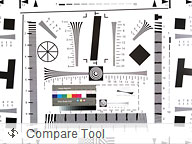
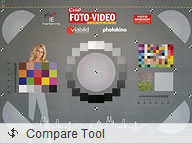

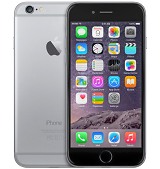

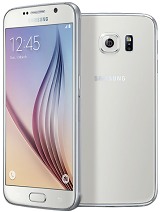
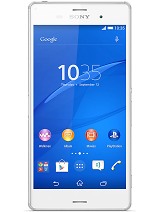
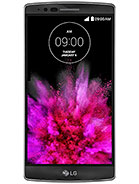




No comments :
Post a Comment